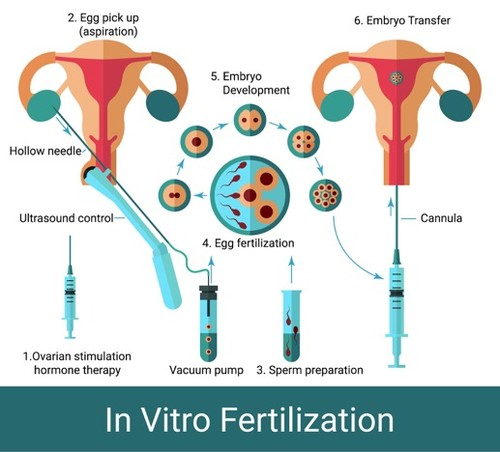IVF stands for the in vitro fertilization. It is an assisted type of reproductive technology that is used for the treatment of infertility and gestational surrogacy. It is a series of complex procedures that are used for preventing the genetic problems, or to help the fertility and mainly it is assisted with the conception of the baby.
Process of IVF
During the process of IVF, the mature eggs are retrieved from the ovaries and then their fertilization is done with the sperms in the lab. Then the embryo that is the fertilized egg is transferred back to the uterus. It takes about 3 weeks for one full cycle of IVF. Sometimes, the steps of this process can be split into the parts and the process can take a long time.
Among the assisted reproductive technologies, IVF is the most effective one. This procedure can be completed by using the eggs and the sperms of the partners or the eggs and sperms of the anonymous donors may be used. The chances of having a healthy baby by using the IVF assisted reproductive technology depends on the various factors, such as causes of infertility, and the age. This technology is invasive, expensive, and time-consuming. Multiple pregnancy can also be achieved by the transfer of more than one embryo in the uterus.

Initial Steps for IVF
While choosing the clinic for IVF assisted reproductive technology, first check about the success rate of the clinic. Ask about the detailed information of all steps and procedures involved in this process. Before starting the cycle of IVF, the couples need to go for some screening tests which are stated below.
Ovarian Reserve Testing: For determination of quality and quantity of the eggs, the doctors may ask to test the concentration of the follicle-stimulating hormones (FSH), anti-Mullerian hormone, and the estrogen.
Semen Analysis: Often it is done as a part of initial fertility evaluation and semen analysis will be conducted before the start of the cycle of IVF treatment.
Screening of Infectious Diseases: Both partners will be screened for infectious diseases, to avoid any complications.
Mock Embryo Transfer: The doctor may conduct the mock embryo transfer for the determination of the depth of the uterine cavity.
Uterine Exam: The inside lining of the uterus will be determined by the doctor, before the start of the IVF cycle. It may involve the sono-hysterography. This step involves the injection of fluid through the cervix to the uterus. Ultrasound will be used for creating the images of the uterine cavity.